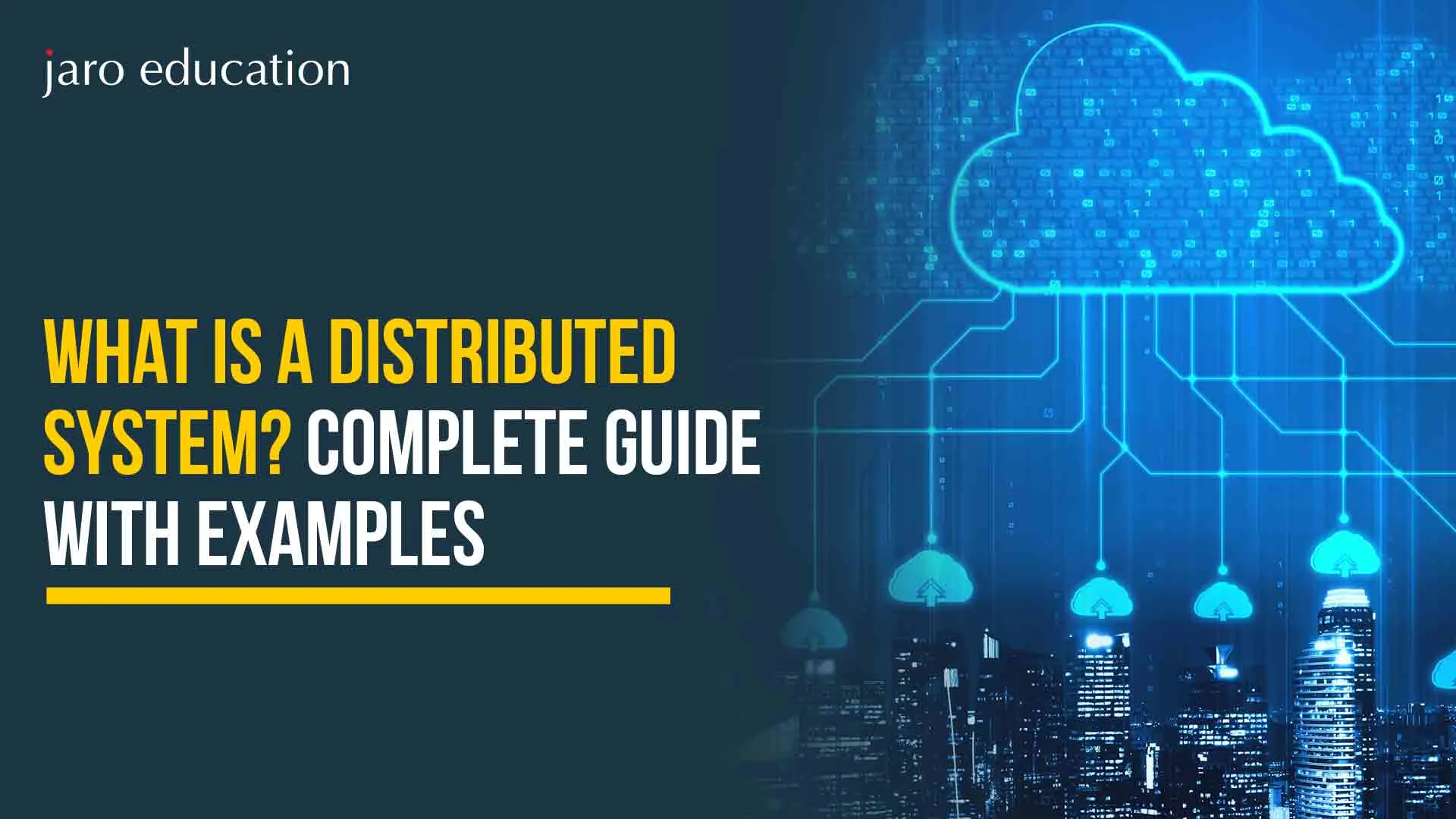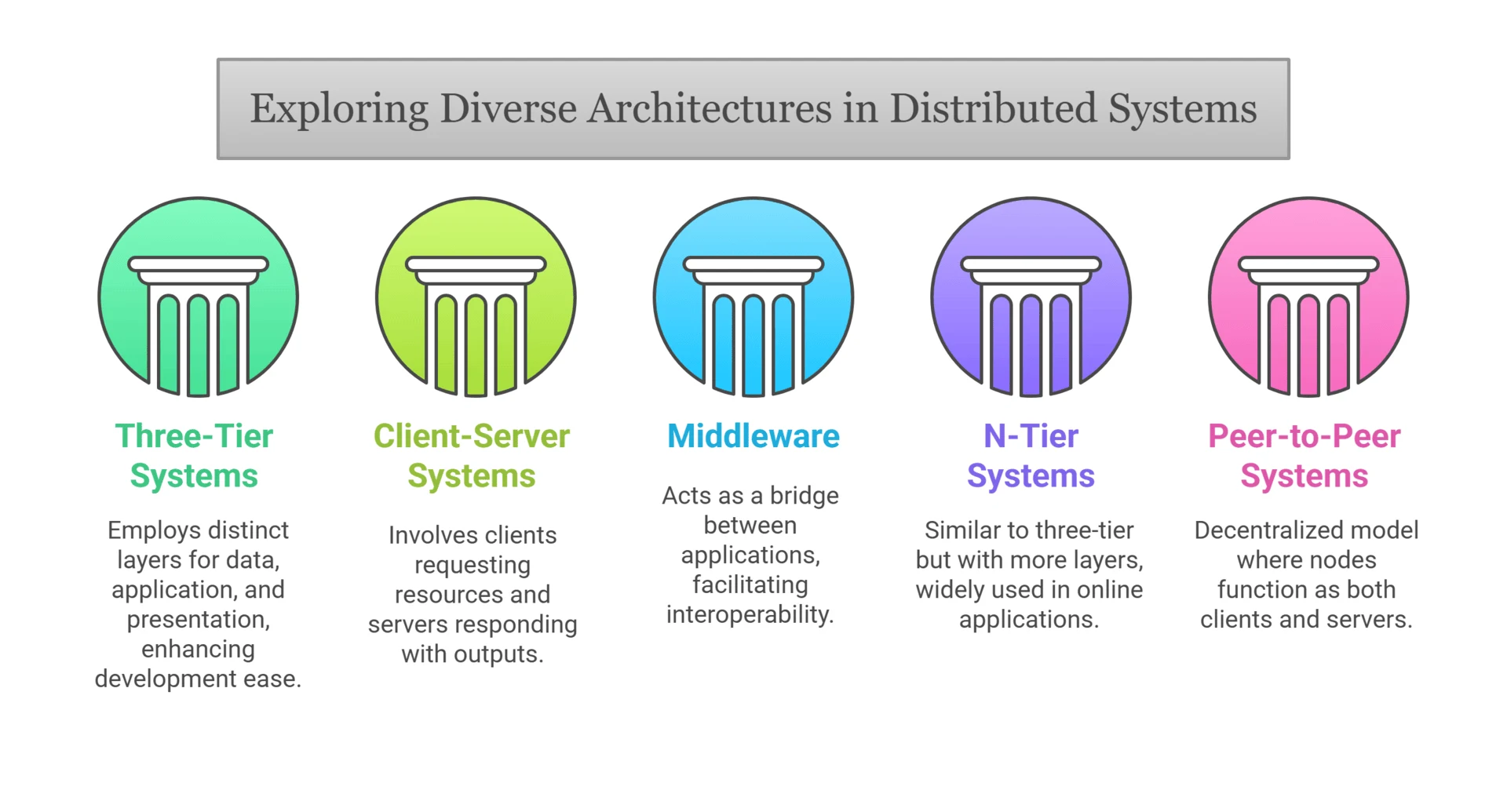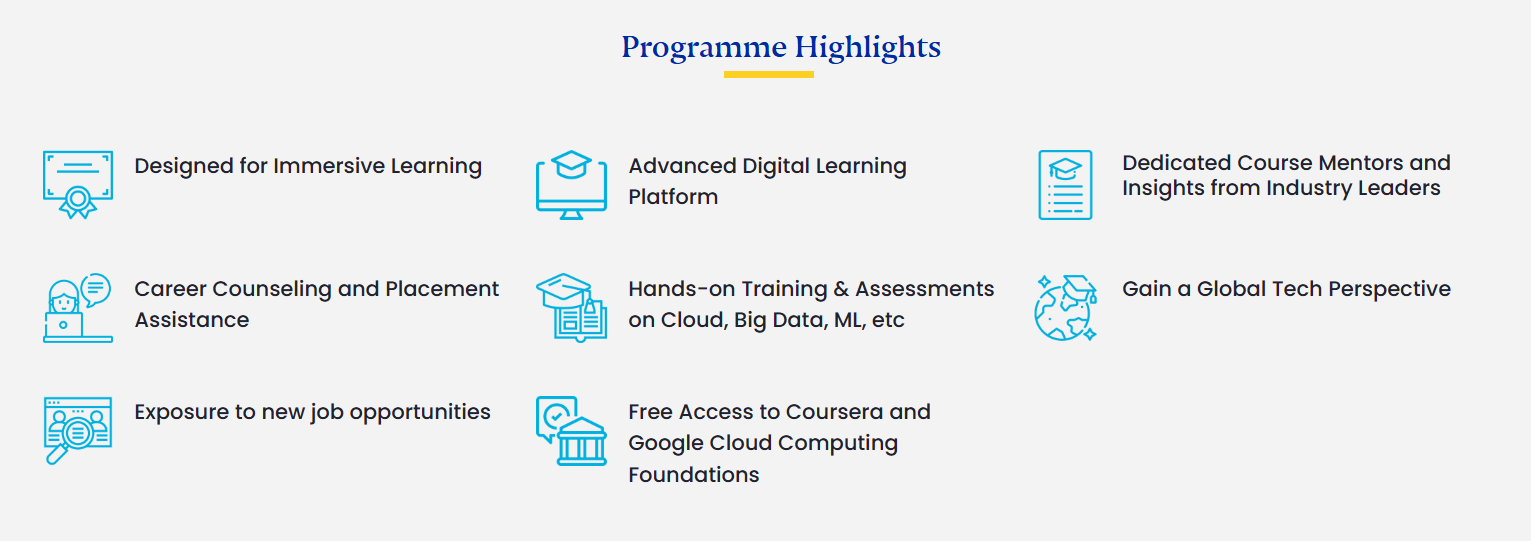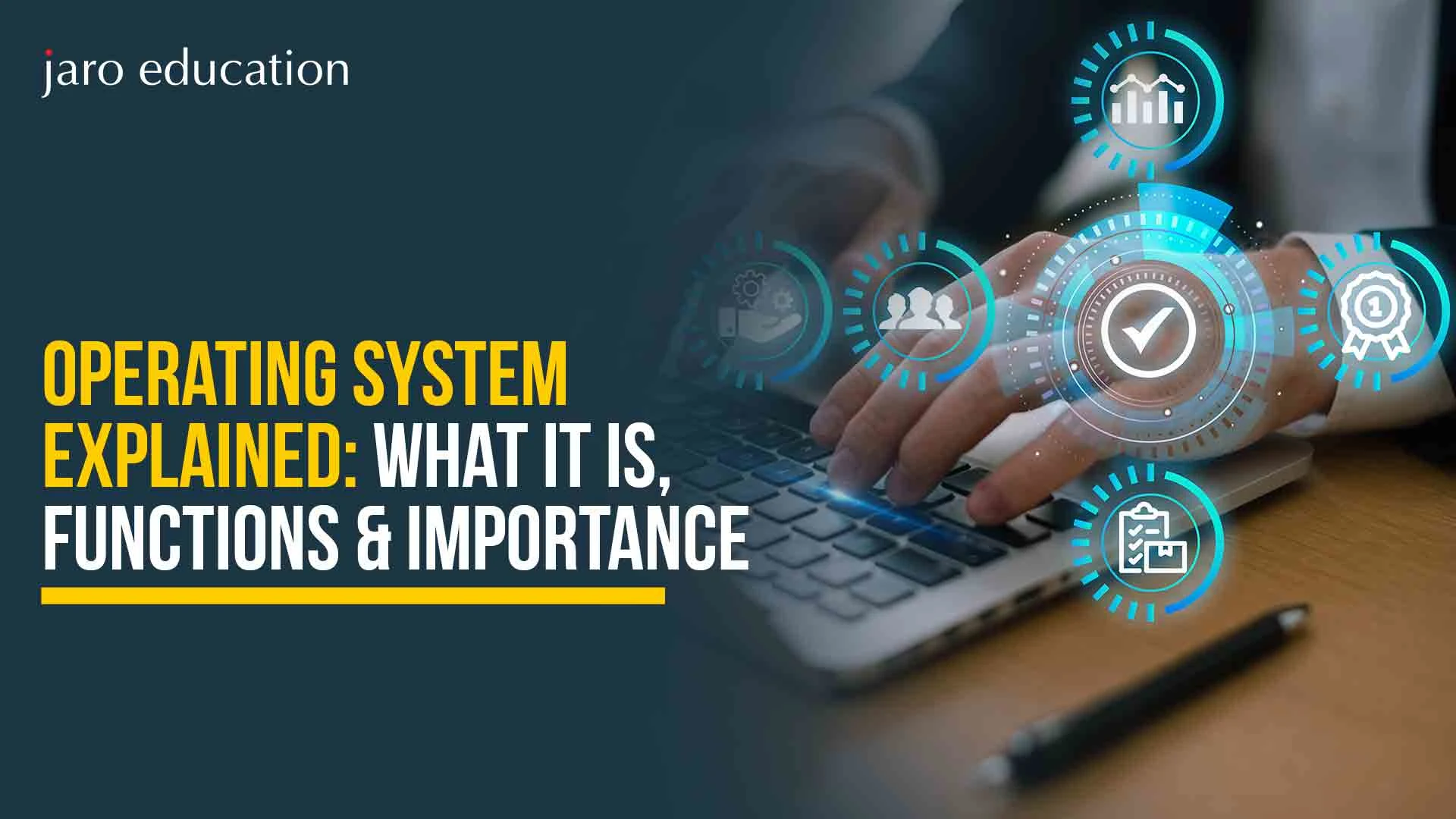What is a Distributed System? Complete Guide with Examples
Table of Contents

- jaro Education
- 27, December 2023
- 11:00 am
In today’s hyper-connected world, systems must be scalable, fault-tolerant, and globally reachable more than ever before. Distributed systems are those technologies on which everything rests – from cloud computing and social media to e-commerce platforms and blockchain networks.
As per the 2024 report from Gartner, over 85% of enterprise software applications are already built on a distributed architecture and will reach 95% by 2026. The need for systems that run on multiple machines and geographies and still appear to work as one ends up increasing manifold.
So you’re probably here already, being a user, and you don’t know it—using Google Search, watching Netflix, or making some transactions via blockchain-distributed systems in use. In this blog, we will study distributed systems in depth.
What is a distributed system?
The distributed system contains independent computers, also known as nodes, working together as a single syste m toward a common goal. Communication across a network and sharing of resources, data, and workloads take place among these systems.
Although geographically distributed, the users see the distributed system as one single, homogeneous system.
Salient Features:
- Resource Sharing: Multiple nodes share hardware, software, and data.
- Scalability: The ability to simply add more machines to accommodate distribution.
- The ability of the system to continue functioning despite one aspect failing.
- Concurrency: Various processes will be executed at the same time by different nodes.
- Transparency is invisible to users; the system hides its own distributed nature from them.
Types of Distributed Systems
Various types of distributed systems enable resource sharing. These are as follows:

Three-tier
A three-tier system employs a distinct layer and server for each program function. The client’s data is saved in the middle tier rather than being sorted into the client system or on their server, allowing for easy development. It has three layers: data, application, and presentation. This type of content is typically found on the web or in online applications.
Client-Server Systems
The simplest fundamental communication mechanism is the client-server system, in which the client gives input to the server and the server responds with output. When a client asks for resources or a task, the server allocates the resource or conducts the job and returns the outcome in the form of a response to the client’s request. Several servers can be used with the Client Server System.
Middleware
Middleware is a program that sits between two other apps and delivers services to both. It serves as a foundation for many interoperability apps that operate on various operating systems. Using this service, you can move data from one person to another.
N-tier
A multitier distributed system is another name for an N-tier system. The network may include various functions in the N-tier system. This system’s stems have structures comparable to a three-tier design. Interoperability occurs when one application requests another to execute a job or deliver a service. N-tier architecture is widely used in online applications and data systems.
Peer-to-Peer Systems
A peer-to-peer system is a decentralized model in which the system functions as both a client and a server. Nodes are critical components of a system. Each node in this system does its duty on its local memory and communicates data over the supporting medium; this node can function as a server or client for the system. Peer-to-peer systems allow programs to communicate at the same level without regard for hierarchy.
In recent times, peer-to-peer systems have three sections.
- Hybrid peer-to-peer: Some nodes in a hybrid P2P have distinct functions assigned to them in an organised fashion
- Structured peer-to-peer: Structured P2P nodes adhere to a prescribed distributed data structure.
- Unstructured peer-to-peer: Unstructured P2P nodes choose their neighbors at random.
Key Components of Distributed Systems
The essential components of a distributed system are the database, the primary system controller, the system data store, the secondary controller, and the user interface client. Optional components in a non-clustered system include user interfaces and supplementary controllers.
Database
A relational database holds all data in a distributed system. When the data storage locates the data, it distributes it to numerous consumers. Relational databases are prevalent in all data systems and allow several users to access the same data simultaneously.
Primary System Controller
In a distributed system, the primary system controller is the single controller that keeps track of everything. It is also in charge of managing and dispatching server requests throughout the system. The executive and mailbox services are installed on the principal system controller automatically. Optional components in a non-clustered system include a user interface and supplementary controllers.
System Data Store
For all shared data, each system has just one data storage. Whether clustered or not, the data is typically stored in the disc vault. This can be on a single machine or dispersed over numerous devices in non-clustered systems, but all machines must have access to this data store.
Secondary Controller
A process controller or a communications controller is the secondary controller. It controls the system’s translation load and regulates the flow of server processing requests. It also regulates the system’s contact with VANs or trade partners.
User Interface Client
The user interface client is a system component that provides users with crucial system information. This is not a clustered environment and does not run on the same computers as the controller. It offers the functions required to monitor and control the system.
Concepts of Distributed System Models
It is a conceptual model that states how components in a distributed setup interact with each other.
- Architectural Models
It specifies how the software components are aligned and interrelated.
- Layered Model:
Organizes software components into hierarchical layers, where each layer provides services to the layer above and consumes services from the layer below.
Example: OSI model in networking. - Object-Based Model:
Structures the system using objects and classes, promoting encapsulation, reusability, and modularity.
Common in OOP-based systems (e.g., Java, C++). - Service-Oriented Architecture (SOA):
Components are designed as services that communicate through standard protocols such as HTTP or SOAP.
Supports scalability and interoperability; widely used in distributed systems. - Event-Based Model:
Components interact by emitting and responding to events. Event listeners are used to handle these interactions asynchronously.
Commonly used in real-time systems and IoT applications.
- Interaction Models
These describe how processes exchange data with each other.
- Synchronous Model: You know the timing bounds within which the communication has to be done.
- Asynchronous Model: Isn’t bound by any timing assumptions; much more flexible yet very difficult to deal with.
- Failed Models
They anticipate what kinds of failures may occur and have an idea of how the system is expected to deal with them.
- Crash Failures: A node ceases operating altogether.
- Omission Failures: A node fails to either send or receive a message.
- Timing Failures: Operations do not get to execute and finish in a place of time.
One might say that a model for distributed systems is a coarse-grained conceptual umbrella that provides orderly treatment of how components in a distributed system should cooperate, interact, and behave. Such a pattern is referred to as an architectural model. As an example, we have
- Layered Model:
Organizes components into layers (like OSI model).
- Object-Based Model: Uses objects and classes for interaction.
- Service-Oriented Model (SOA): Services talk to each other through standard protocols like HTTP.
- Event-Based Model: Components interact through events and listeners (common in IoT).
Distributed Systems Are Ubiquitous
Here are some real-world examples that matter tremendously:
- Google Search. A gargantuan distributed system that crawls, indexes, and serves billions of web pages in real-time.
- Netflix. A set of globally distributed servers for the proper and efficient delivery of streaming content to millions of users.
- Amazon. It works on distributed databases and cloud systems to manage inventory, transactions, and user data.
- Blockchain Networks. A decentralized peer-to-peer system that ensures secure immutable data exchange (for example, Bitcoin, Ethereum).
- Online Multiplayer Games. To ensure real-time synchronization through matchmaking and world simulation.
- Facebook and Instagram. They are globally distributed from data centers, providing low latency and high availability for billions of users.
Distributed Systems: Benefits
After comprehending what distributed systems are, it is essential to know why it is beneficial for businesses and organizations. Here are some benefits of distributed systems.
Innovative
Distributed systems foster innovation in many areas, like the Internet of Things (IoT) and Machine Learning.
Reduces Latency
Low latency is achieved using distributed systems. If a node is closer to the user, the distributed system ensures that traffic from that node reaches the system. As a result, the user may realize that it takes significantly less time to serve them.
Geographic Distribution
A feature of a distributed system is geographic distribution. It allows companies and organizations to provide users with services in different areas.
Offers Seamless Performance
Distributed systems can outperform centralized systems by utilizing the capabilities of several computers to handle the demand.
Reliable
In terms of failures, distributed systems are significantly more dependable than single systems. Even if a single node fails, it does not affect the remaining servers. Other nodes can continue to operate normally.
Efficient
Because they contain several computers, distributed systems are designed to be efficient in every way. Each of these computers could tackle issues on its own. This is not only deemed efficient, but it also saves the user a substantial amount of time.
Secure
Distributed systems include security safeguards that prevent data breaches and illegal access to any data, hardware or software of an organization.
Cost-effective
Distributed systems, despite their high expense of implementation, are reasonably cost-effective in the long term. A distributed system, unlike a mainframe computer with multiple processors, consists of several computers working together. This infrastructure is significantly less expensive than a mainframe system.
Distributed Systems: Examples
When processing capacity is limited or when a system faces unexpected changes, distributed systems are perfect for balancing the burden. As a result, distributed systems have an infinite number of use cases ranging from electronic banking systems to multiplayer online games. Let’s look at some more explicit examples of distributed systems:
Telecommunication Networks
Peer-to-peer networks include telephone and cellphone networks. Telephone networks were the first example of distributed communication, and cellular networks are another type of distributed communication system. As distributed communication networks, they become increasingly sophisticated with the deployment of Voice over Internet Protocol (VoIP) communication systems.
Parallel Processors
Specific tasks are distributed across numerous processors in parallel computing. This, in turn, generates components that may be assembled to make a large computing work. Previously, parallel computing was limited to numerous threads or processes accessing the same data and memory. Operating systems, as they grew more common, also fell into the realm of parallel processing.
Networks
Ethernet and LAN (Local Area Network) were invented in 1970. The LAN allows computers to connect in the same area. Thanks to the development of peer-to-peer systems, the Internet and e-mail continue to be the two most significant examples of distributed systems.
Distributed Database Systems
A distributed database is dispersed across several servers or locations. One can copy the data on many systems. The nature of a distributed database system might be either homogeneous or heterogeneous. All systems in a homogeneous distributed database utilize the same database management system and data model.
Real-time systems
Real-time systems are not restricted to a single industry. These systems may be found in logistics, massively multiplayer online games (MMOGs), financial trading, ride-sharing, e-commerce, and the airline industry worldwide. The emphasis in these types of systems is on information exchange and processing, with the requirement to communicate data quickly to an extensive range of users who have demonstrated an interest in such material.
Why Choose Manipal University? Unlock Your Future Here
The Online MCA program has been structured for professionals who want to equip themselves with the strategic subtleties to transform the dynamically shifting world. This truly global online MCA program equips professionals with skills in cloud technology, concepts, hands-on labs, assessments, and a capstone project through exciting coursework such as cloud infrastructure, application development, big data, ML, and so much more. The online MCA program primarily seeks to train innovative technology leaders in the ever-changing technological landscape. The professionals will be able to attend live and recorded classes wherein they will have a self-paced learning experience and write the online proctored exams right from the comfort of their home.
Below are the key highlights of the programme:

Turn Your Career With Jaro Education
Career choice can be complicated; let Jaro Education guide you through. It is a student-centric approach that respects its students with the utmost importance and supports them in making sound academic and job decisions.
Whether you are a potential graduate, a working professional, or someone seeking a career change, Jaro assures that all these students receive guidance from experienced counselors in:
- Choosing programs or specializations
- Identifying their strengths and career interests
- Mapping academic goals according to market activities
- Preparing an actionable roadmap for sustainable career success
Through industry-relevant courses, mentorship from global faculty, career guidance, and placement support, Jaro ensures its students receive the right education and mentoring today to forge onward in this increasingly competitive job market.
Final Thoughts
Distributed systems, because of their capacity to provide scalability and enhanced performance, are the most significant enablers of current computer systems. Wireless networks, cloud computing, and the internet all rely on distributed systems. Distributed systems, since they may draw on the resources of other devices and processes, provide some capabilities that would be difficult or impossible to design on a single system and have become extremely dependable by combining the power of several computers.
Since most organizations heavily rely on distributed computing, they require professionals to carry out the process. However, one can achieve it only through proper skills and knowledge. For that reason, Manipal University is offering an online course in Master’s of Computer Applications. This course allows professionals to gain an in-depth understanding of cloud computing and its infrastructure. The program also enables individuals to learn about big data, application development, and machine learning.
Frequently Asked Questions
A distributed system is a network of independent computers (also called nodes) that work together to appear as a single system to users. These computers share data, resources, and tasks to improve scalability, availability, and reliability.
Common examples include:
- Google Search (distributed web crawling and indexing)
- Netflix (content delivery through distributed servers)
- Amazon Web Services (cloud infrastructure)
- Bitcoin and Ethereum (distributed blockchain networks)
- Facebook and Instagram (globally distributed data centers)
- Scalability
- Fault tolerance and high availability
- Better resource utilization
- Location independence
- Parallel processing and performance optimization
- System complexity
- Network latency
- Data consistency
- Security threats
- Fault detection and recovery
- Client-Server Systems
- Peer-to-Peer (P2P) Systems
- Distributed Databases
- Cloud-Based Systems
- Clustered Computing Systems










